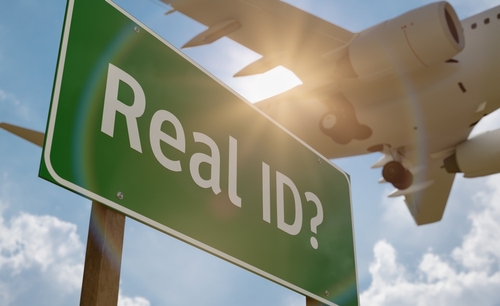Traveling to Canada, whether for a weekend getaway or a work trip, requires preparation. Among the top questions travelers often ask is, “Do I need a passport to go to Canada if I have a REAL ID?” This question has surfaced more often since REAL ID standards became widely adopted in the United States.
If you find yourself unsure about the travel requirements when crossing the border, this guide will provide the answers you need. By the end of this post, you’ll know exactly what documentation is required for entering Canada so you can plan your trip confidently and stress-free.
What Is a REAL ID and Why Does It Matter?
A REAL ID is a federally compliant identification card or driver’s license designed to meet specific security standards set by the U.S. Department of Homeland Security. These IDs are marked with a star and are often required for specific domestic purposes, such as boarding domestic flights within the United States or accessing federal buildings.
While the REAL ID is an important form of identification, its functionality for international travel, including Canada, is much more limited.
Does REAL ID Replace a Passport for Canada?
No, a REAL ID does not replace a passport for international travel to Canada. Although a REAL ID is helpful for domestic purposes within the U.S., it does not meet the entry requirements for crossing the Canadian border, whether by land, air, or sea.
Travel Documents Needed to Enter Canada
When visiting Canada, the travel document(s) you need depend on how you plan to travel.
1. By Air
If you’re flying to Canada, a valid passport is mandatory for all U.S. citizens. Airlines and Canadian border authorities require it as proof of identity and nationality.
2. By Land or Sea
If you’re driving, taking a bus, riding a train, or traveling by cruise ship, the following documents are acceptable for U.S. citizens:
- Passport or Passport Card
- NEXUS Card (frequent travelers to Canada)
- Enhanced Driver’s License (EDL) (available in specific U.S. states such as New York, Washington, Vermont, and Michigan)
What If You’re a U.S. Lawful Permanent Resident?
U.S. Green Card holders must travel with their Green Card and a valid passport from their home country when entering Canada.
Why Isn’t REAL ID Enough for Canada?
The basic concept of REAL ID is to secure identity verification for domestic purposes. However, Canada requires documents that provide proof of citizenship, not just identity. Since REAL ID does not establish your citizenship status, it cannot be used for travel across international borders.
This distinction is important because checking citizenship is a key component of border security in Canada.
Exceptions for Certain Border Crossings
Frequent travelers and residents of certain border towns have additional options. For example, the NEXUS card can simplify the process for travelers crossing the U.S.-Canada border regularly. NEXUS cards undergo pre-screening processes and are accepted for faster processing at many border checkpoints.
Children under 16 can present their birth certificates when crossing by land or sea, but adults must have more formal documentation (such as a passport or an approved border-crossing card).
What Travel Documents Do I Need for International Travel to Spain After Visiting Canada?
When traveling internationally to Spain after visiting Canada, ensure you have your passport, a valid visa if required, and any necessary health documents. With everything in order, you’ll be ready to embark on your adventure and explore barcelona’s cultural delights, from stunning architecture to vibrant art scenes.
What Happens If You Try to Enter Canada Without Proper Documentation?
If you attempt to cross into Canada without the required travel documents:
- You may be denied entry by border authorities.
- You could face significant delays or be required to return home to retrieve the correct documents.
Always ensure you have the necessary paperwork for peace of mind during your travels.
How to Ensure You’re Travel-Ready
To make your trip to Canada as smooth as possible:
- Check Your Passport’s Expiration Date
Ensure that your passport or passport-equivalent document is valid for the duration of your stay.
- Confirm Your Mode of Entry
Decide whether you’re traveling by air, land, or sea and ensure you carry the appropriate travel documents.
- Apply for Any Special Travel Programs
Consider enrolling in programs like NEXUS or obtaining an Enhanced Driver’s License if you’re a frequent traveler to Canada.
- Plan Ahead
Apply for travel documents well in advance of your trip, as processing times for passports and travel cards can vary.
FAQs About Traveling to Canada with REAL ID
Can I Travel to Canada with Just a REAL ID?
No. A REAL ID cannot be used to enter Canada as it does not document citizenship.
What Happens If I Forget My Passport?
If you attempt to travel to Canada without a passport or approved travel document, you may be denied entry. It’s crucial to have the appropriate paperwork to ensure smooth border crossing.
Are Enhanced Driver’s Licenses Different from REAL ID?
Yes. While a REAL ID confirms identity for domestic purposes, an Enhanced Driver’s License (EDL) acts as both an identification document and proof of citizenship for land and sea travel to Canada.
